The purpose for numbering the pages 68-69 twice in
Manuscript E might have been to point out how the current position of Aldebaran
(*68) was 2 days misaligned (hahara) in relation to the
Mayan creation of our world (3112 BC + AD 1842) * 365.25 / 26000 = *70.
On the other hand could the idea of repetition also have been to
illustrate the phenomenon of retrograde motion:

... Ancient people were fascinated
with the periodic backward loops turned by Mars every two years
...
385 (January 20) - 310 (November 6)
= 75 days (= 300 / 4 = 365 - 290).
|
Synodic
cycles: |
|
Mercury (Yggr) |
115.88 |
|
Venus |
583.92 |
|
Earth |
364.0 = π * 115.88 |
|
... Another name for Mercury was
Hermes and Hermes Trismegisthos
(thrice-mighty) could have referred to the fact that
there were 3.14 * 115.88 = 364.0 days for the cycle
of the Earth around the Sun. Although the calendar
has 365 days for a year this is due to the fact that
the Earth has to turn around an extra day in order
to compensate for how the direction to the Sun
changes during a year ... |
|
Mars |
779.96 = 360 + 420 |
|
780 - 364 = 414. This number suggests
both Bharani (*41.4) and April 14 (104 = 364 - 260). |
|
Jupiter |
398.88 = 115.88 + 283.00 |
|
Saturn |
378.09 = 314 + 64 |
|
Uranus |
369.66 |
There were 6 days from the sweet
potato variant 20 he mamari kiakia (at the Egg, Beid, *62)
to Aldebaran (*68), and the number of banana (maika)
varieties on Easter Island was also 6:
|
Te Takapau (*0)
SIRRAH |
UHI |
KUMARA |
|
38 |
BHARANI (*41) |
20 |
BEID (*62) |
|
63 days
= 9 weeks |
6
* (1 + 2 + 3 + 4) + 61 = 11 * 11:

Mamari. Egg,
fish roe. mâmari ata rauhau, last small egg laid by a hen
before she turns broody. Vanaga. Egg (of fowl or fish), (gamamari),
(Cf. komari.); mamari punua, chicken in the shell.
Churchill.
Kiakia.
Dove, gull T. Mgv.: kiakia, the cry of the kotake
(a white marine bird.) Churchill.
... Now birds and fishes are born under the sign of the Yin
[Moon], but they belong to the Yang [Sun]. This is
why birds and fishes both lay eggs. Fishes swim in the waters,
birds fly among the clouds. But in winter, the swallows and
starlings go down into the sea and change into mussels ...
The underground (not now visible but heaped up - puo) plants
uhi and kumara at the end of the back side of the
text on the G tablet were
followed by maika on side a.
|
he maika |
|
- |
origo (*59 ←
*63
) |
he ri'o |
|
1 |
*1 (*60
← *64) |
he koro tea. |
a Teke. a Oti. |
|
2 |
*2 |
he hihi. |
|
3 |
*3 |
he pukapuka. |
|
4 |
*4 |
he pia. |
|
5 |
*5
(*64
← *68) |
he nahoo. |
|
Maika.
Banana (Musa
sapientum). Ancient varieties were
called ri'o, hihi, korotea, pia,
pukapuka, naho'o. Vanaga. Meika,
banana. Pau., Mgv.: meika,
id. Mq.: meika, meia, id.
Ta.: meia, id.
Churchill.
 |
By moving back in time to the Pope Gregory XIII
the right ascension day *63 at my assumed epoch
for rongorongo would have corresponded to
Gregorian *59 (= 2 * 29½). The arrow of time is
always pointing ahead and going back in time
(moving retrograde) must therefore be done
outside living time.
... Space and time are a
single, related concept in Runasimi [the
language of the Inca people], represented by one
word, pacha, which can also mean 'world'
and 'universe'. The image of time familiar to
Waman Puma was static and spatial:
one could travel in time as one travels over
earth - the structure, the geography, remaining
unchanged. To him it does not matter that he
shows Inka Wayna Qhapaq, who died
in 1525, talking to Spaniard, who did not arrive
until 1532. Wayna Qhapaq was the last
Inca to rule an undivided empire: he is
therefore the archetype, and it must be he who
asks the Spaniards. 'Do you eat gold?' In Andean
thought both world and time were divided into
four sectors or directions unified under a
presiding fifth principle. The Tawantinsuyu
- 'the indivisible four quarters' - was unified
and presided over by Cusco, the center.
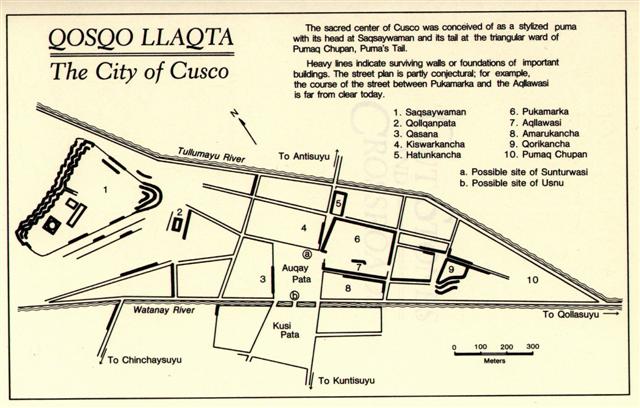
Similarly, history was
divided into four previous ages, presided over
by a fifth, the present. In his book, Waman
Puma organizes the history of both Old
and New worlds according to this scheme. The Old
Testament and the pre-Inca times are each
divided into four equivalent and parallel ages.
The 'present' age in Peru begins with the
appearance of Manku Qhapaq, the
first Inca, a being of supernatural origin. And
in the Old World the 'present' starts with the
birth of Jesus Christ ...

And after having gone 4 days back 'outside time' so to say there
might be thoughts of another
4 such days needed to get back. 4 + 4 = 8 suggests the dark
nights before Venus returns to visibility as
Morning Star.

However, the latter 4 days would be 'living' for
they followed the Sun.
|
5
of the banana shoots from the plantation of
Teke: |
|
origo (he ri'o) |
1 he koro tea. |
2 he hihi. |
3 he pukapuka. |
4 he pia. |
|
Koro. 1. Father (seems to be
an older word than matu'a tamâroa). 2. Feast,
festival; this is the generic term for feasts
featuring songs and banquetting; koro hakaopo,
feast where men and women danced. 3. When (also:
ana koro); ana koro oho au ki Anakena,
when I go to Anakena; in case, koro haga e
îa, in case he wants it. Vanaga. If.
Korokoro, To clack the tongue (kurukuru).
Churchill. Ma.: aokoro, pukoro, a halo
around the moon. Vi.: virikoro, a circle
around the moon. There is a complete accord from
Efaté through Viti to Polynesia in the main use of
this stem and in the particular use which is set to
itself apart. In Efaté koro answers equally
well for fence and for halo. In the marked advance
which characterizes social life in Viti and among
the Maori the need has been felt of qualifying
koro in some distinctive manner when its
reference is celestial. In Viti virimbai has
the meaning of putting up a fence (mbai
fence); viri does not appear independently in
this use, but it is undoubtedly homogenetic with
Samoan vili, which has a basic meaning of
going around; virikoro then signifies the
ring-fence-that-goes-around, sc. the moon. In the
Maori, aokoro is the cloud-fence. Churchill
2.
Hihi
ketuketu, to turn back the eyelids.
Kihipuka,
corresponding to sunrise, or about 6 A.M.
Tiputa.
Pau.: To bore, to perforate. Ta.: tiputa, to
pierce. Mq.: tiputa, id. Ha.: kipuka,
an opening. Churchill. |
|
MARCH 20 (*364) |
0h |
22 (*1) |
23 |
24 (83) |
 |
no glyph |
 |
 |
 |
|
Gb8-30
(242) |
Ga1-1 |
Ga1-2 |
Ga1-3 |
|
Al Dabarān-2 (The Follower)
HYADUM I
= γ Tauri
(63.4)
*22.0 = *63.4 - *41.4 |
HYADUM
II
= δ¹ Tauri
(64.2) |
Net-19 (Crow)
AIN
(Eye) =
ε Tauri,
θ¹
Tauri,
θ²
Tauri (65.7) |
no star
listed (66) |
no star
listed (67) |
|
... There was no
water in the village. The lakes and rivers were dry.
Raven and Crow, two young girls who were having
their first menstrual courses, were told to go and
draw water from the ocean. Finding the journey too
long, Raven decided just to urinate into her
basket-bucket. She decieved no one and was severly
scolded. Crow returned much later but with drinking
water. As a punishment, Raven was condemned never to
find water in the summer; only in winter would she
find something to drink. For that reason the Raven
never drinks during the hot months; she speaks with
a raucous voice because of her dry throat
... |
|
May 23 |
24 |
25 (145) |
26 (*66) |
27 |
|
°May 19 |
20 |
21 (*61) |
22 (142) |
23 |
|
'April 26 |
27 |
28 (118) |
29 (*39) |
30 |
|
"April 12
(*22) |
13 |
14 (104) |
15 (*25) |
16 (471 = 314 *
1½) |
|
CLOSE TO THE FULL
MOON: |
|
19 |
SEPT 20 (*183) |
21 (264) |
EQUINOX |
23 |
|
YED POSTERIOR (Hand Behind) =
ε
Ophiuchi,
RUKBALGETHI SHEMALI
(Northern Knee of the Giant) =
τ
Herculis
(246.6).
δ
Apodis (246.7),
ο
Scorpii (246.8) |
Heart-5 (Fox)
σ
Scorpii
(247.0),
HEJIAN = γ Herculis
(247.2),
ψ
Ophiuchi (247.7) |
ρ
Ophiuchi (248.1),
KAJAM
(Club)
=
ω
Herculis
(248.3),
χ
Ophiuchi (248.5),
SHE LOW (Market Tower) = υ Ophiuchi,
Tr.
Austr. (248.7), ζ Tr. Austr. (248.8) |
Al Kalb-16 (The Heart) /
Jyeshtha-18 (Eldest) /
ANA-MUA-1 (Entrance pillar)
ANTARES
= α Scorpii
(249.1),
MARFIK (Elbow) = λ Ophiuchi,
φ Ophiuchi (249.5), ω Ophiuchi (249.8) |
γ Apodis (250.1), σ Herculis (250.3), θ Tr. Austr.
(250.6), τ Scorpii (250.7) |
|
... Proclus
informs us that the fox star nibbles continuously at
the thong of the yoke which holds together heaven
and earth; German folklore adds that when the fox
succeeds, the world will come to its end. This fox
star is no other than Alcor, the small star g
near zeta Ursae Majoris (in India Arundati,
the common wife of the Seven Rishis, alpha-eta Ursae
...
 |
|
Nov 22 |
23 (327) |
24 |
25 (*249) |
26 |
|
°Nov 18 |
19 |
20 (*244) |
21 (325) |
22 |
|
'Oct 26 |
27 (300) |
28 |
29 (*222) |
30 |
|
"Oct 12 |
13 (286) |
14 |
15 (*208) |
16 |
The Arab station The Follower -
Al Dabarān - was defined by 6 stars in Taurus, viz. γ
(Hyadum I), δ (Hyadum II), ε (Ain, the Eye), θ¹, θ², and α
(Aldebaran). I have allocated them over 6 right ascension
days and according to the evidence in the Arab structure
I have chosen Hyadum I (γ) as the Leader (the opposite
of a Follower) - because of its right
ascension fraction (0.41).

... I once upon a time discovered the key role played by
Bharani from studying the manazil structure of the
Arabs. This was my perception of the 1st half of the year
(before Spica and Heze arrived at the beginning of the 2nd
half):
|
Delta |
δ Andromedae |
8.4 |
March 29 (88) |
0 |
|
|
Eta |
|
η Andromedae |
11.4 |
April 1 (91) |
3 |
|
|
1 |
Al Sharatain |
Pair of Signs |
β Arietis (Sheratan),
γ (Mesarthim) |
27.4 |
April 17 (107) |
19 |
|
|
Musca Borealis |
35 (Head of the Fly),
39 (Kaffaljidhma), and
41 Arietis (Bharani) |
41.4 |
May 1 (121) |
33 |
0 |
|
2 |
Al Dabarān |
Follower |
α Tauri (Aldebaran),
θ¹, θ²´,
γ (Hyadum I),
δ (Hyadum II), ε (Ain) |
63.4 |
May 23 (143) |
55 |
22 |
|
3 |
Al Hak'ah |
White Spot |
λ
Orionis (Heka),
φ¹,
φ² |
83.4 |
June 12 (163) |
75 |
42 |
|
4 |
Al Han'ah |
Brand |
γ Gemini (Alhena), μ
(Tejat Posterior), ν,
η (Tejat Prior),
ξ (Alzirr) |
93.4 |
June 22 (173) |
85 |
52 |
|
5 |
Al Dhirā' |
Forearm |
α Gemini (Castor),
β (Pollux) |
113.4 |
July 12 (193) |
105 |
72 |
|
6 |
Al Nathrah |
Gap |
ε Cancri (Beehive) |
130.4 |
July 29 (210) |
123 |
90 |
|
7 |
Al Tarf |
End |
ξ
Cancri,
λ
Leonis (Alterf) |
143.4 |
Aug 11 (223) |
135 |
102 |
|
8 |
Al Jabhah |
Forehead |
η Leonis (Al Jabhah),
α (Regulus), ζ
(Adhafera), γ (Algieba) |
152.4 |
Aug 20 (232) |
144 |
111 |
|
9 |
Al Zubrah |
Mane |
δ
Leonis (Zosma),
θ
(Coxa) |
169.4 |
Sept 6 (249) |
161 |
128 |
|
10 |
Al Sarfah |
Turn |
β Leonis (Denebola) |
178.3 |
Sept 15 (258) |
170 |
137 |
|
11 |
Al Áwwā' |
Barker |
β (Alaraph), η
(Zaniah),
γ (Porrima),
δ (Minelauva), ε
Virginis (Vindemiatrix) |
191.5 |
Sept 28 (271) |
183 |
150 |
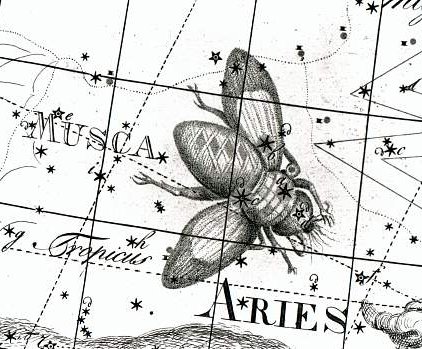
We should also remember the banana plantation that Ure Honu
weeded at the time when the Sun 'stood just right', and
when he followed the Rat for 3 days - presumably
corresponding to the 3 days when in China only cold food
was served:
... In China, every year
about the beginning of April, certain officials
called Sz'hüen used of old to go about
the country armed with wooden clappers. Their
business was to summon the people and command
them to put out every fire. This was the
beginning of the season called Han-shih-tsieh,
or 'eating of cold food'. For three days all
household fires remained extinct as a
preparation for the solemn renewal of the fire,
which took place on the fifth or sixth day after
the winter solstice [Sic!] ...
3 + 5 = 8.
... Another year passed, and
a man by the name of Ure Honu went to
work in his banana plantation. He went and came
to the last part, to the 'head' (i.e., the upper
part of the banana plantation), to the end of
the banana plantation. The sun was standing just
right for Ure Honu to clean out the weeds
from the banana plantation.
On the first day he hoed the
weeds. That went on all day, and then evening
came. Suddenly a rat came from the middle of the
banana plantation. Ure Honu saw it and
ran after it. But it disappeared and he could
not catch it. On the
second day of hoeing, the same thing happened
with the rat. It ran away, and he could not
catch it. On the third day, he reached the
'head' of the bananas and finished the work in
the plantation. Again the rat ran away, and
Ure Honu followed it. It ran and slipped
into the hole of a stone. He poked after it,
lifted up the stone, and saw that the skull was
(in the hole) of the stone. (The rat was) a
spirit of the skull (he kuhane o te puoko).
Ure Honu
was amazed and said, 'How beautiful you are! In
the head of the new bananas is a skull, painted
with yellow root and with a strip of barkcloth
around it.' Ure Honu stayed for a while,
(then) he went away and covered the roof of his
house in Vai Matā. It was a new house. He
took the very large skull, which he had found at
the head of the banana plantation, and hung it
up in the new house. He tied it up in the
framework of the roof (hahanga) and left
it hanging there ...

He weeded his banana plantation for 3 days, perhaps
corresponding to the 3 days from Antares at the Full Moon to
the Sun at Aldebaran, i.e. from Sunrise (he pukapuka)
up to and including he nahoo. Here the Sun was running quickly
(as the Mad Hatter, quicksilver, Mercury), at the spring equinox
- like Ure Honu chasing the spirit of the very large
skull. Therefore the Full Moon should stand still, maybe
resting in peace (RIP) for 5 nights.
... Nut, whom the Greeks sometimes identified with Rhea, was
goddess of the sky, but it was debatable if in historical
times she was the object of a genuine cult. She was Geb's
twin sister and, it was said, married him secretly and
against the will of Ra. Angered, Ra had the couple brutally
separated by Shu and afterwards decreed that Nut could not
bear a child in any given month of any year. Thoth, Plutarch
tells us, happily had pity on her. Playing draughts with the
Moon, he won in the course of several games a seventy-second
part of the Moon's light with which he composed five new
days. As these five intercalated days did not belong to the
official Egyptian calendar of three hundred and sixty days,
Nut was thus able to give birth successively to five
children: Osiris, Haroeris (Horus), Set, Isis and Nepthys
...
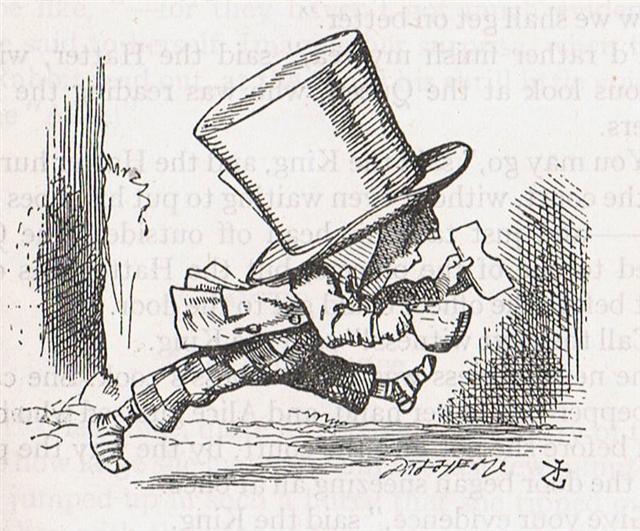
|
5 he nahoo. |
*69 |
1
ngeti uri.
(*68) |
|
Naholoholo
('Swift-running'). |
|
JULIAN EQUINOX (84) |
MARCH
26 |
27
(*6) |
 |
 |
 |
|

|
 |
 |
 |
|
mauga |
kai |
May 30
(150) |
ragi |
|
|
Ga1-4 |
Ga1-5 |
Ga1-6 |
|
Rohini-4 (The Red One) /
Pidnu-sha-Shame-4 (Furrow of Heaven)
/
ANA-MURI-2 (Rear pillar - at the foot of
which was the place for tattooing)
ALDEBARAN
= α Tauri
(68.2),
THEEMIN = υ² Eridani
(68.5) |
no star
listed (69) |
no star listed (70)
(3112 BC + AD
1842) * 365.25 / 26000 = 70 |

On Tahiti
Aldebaran was named Ana-muri
(star pillar at the end of summer) and
as a further clue it was stated that
here (when the Sun reached the 'foot' of
Aldebaran) was the place for tattooing →
darkening as observed from a place south
of the equator. Rigel ('Foot') was at
the foot of Orion (as perceived from a
place in the north), i.e. we can
interpret 'foot' as corresponding to
time zero (origo) - where Land (to walk
on) in the sky had arrived. Here time
was moving quickly (naholoholo)
in contrast to at the solstices.
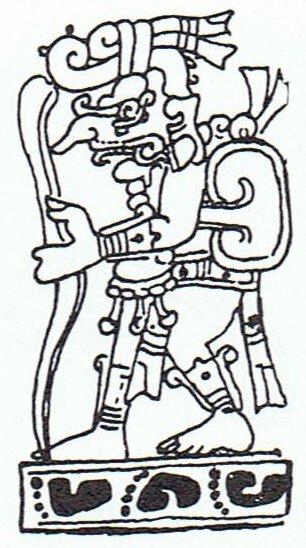 |
|
May
28 (148) |
29
(88 + 61) |
30
(*70) |
|
°May
24 (144) |
25 (*65) |
26 |
|
'May
1 (121) |
2
(*42) |
3 |
|
"April 17 (107) |
18 (*28) |
19 |
|
CLOSE
TO THE FULL MOON: |
|
SEPT
24 (267) |
25 (*188) |
26
(84 + 185) |
|
HAN = ζ Ophiuchi
(251.0) |
ζ
Herculis,
η
Tr. Austr.
(252.1), η Herculis, β Apodis (252.5) |
ATRIA
=
α
Tr. Austr.
(253.9) |
|
JULY 2 (183) |
83 |
SEPT 24 (267) |
 |
 |
|
11h (167.4)
χ Leonis, χ¹ Hydrae (167.1),
χ² Hydrae (167.3)
*167.4 - *41.4 = *126.0 |
HAN = ζ Ophiuchi
(251.0) |
|
|
Nov
27 |
28 |
29
(333) |
|
°Nov
23 |
24
(*248) |
25 (329) |
|
'Oct
31 (*225) |
'Nov
1 |
2
(306) |
|
"Oct
17 (*210) |
18 |
19
(292) |
 |
This was at the time of the Bull, but of course
still remembered. In order to go back to the
time of Gregory XIII we have to add 4 more
glyphs (items to be brought onboard), because
*68 (epoch or rongorongo) → *64 (epoch of the
Pope). Which means MARCH 29 (88) corresponded
both to June 1 (152 = 88 + 64) and to °May 28
(148 = 88 + 60).
The list of taro variants ought to begin - if
there had been no complications - at right
ascension day *62 (Beid) + *5 (varieties of
banana shoots brought onboard) + *1 = *68. But
there was a zero day at the beginning of side a
of the G tablet. Thus we can guess the taro list
should begin at right ascension day *69.
However, the pages E:68 and E:69 was repeated.
Maybe it means we should consider he ngaatu
(the 3rd item on the list) as corresponding to
right ascension day *69. And as ngeti uri
and ngeti tea has no article he we
will get confirmation - they should not be
counted.
°May
28 (148, *68) -
corresponding to MARCH 29 (88 = 148 - 60) - had
moved to June 1 (152, *72) at the time of
rongorongo:
|
2 + 8 + 2
variants of
taro brought
by Oti from
the
plantation
of Teke: |
|
1 |
- |
ngeti uri.
(*68) |
a Teke. a
Oti. |
|
2 |
- |
ngeti tea.
(*69) |
|
3 |
*72 |
he ngaatu.
(*68) |
|
4 |
*73 |
he tuitui
koviro. |
|
5 |
*74 |
he ketu anga
mea. |
|
6 |
*75 |
he ketu
takarua. |
|
7 |
*76 |
he teatea. |
|
8 |
*77 |
he ngu haha
tea. |
|
9 |
*78 |
he mango. |
|
10 |
*79 |
he hahara
rapanui
(*75) |
|
1 |
*80 |
he ti. |
|
1 |
*81 |
he kape.
(*77) |
|
2
ngeti tea.
(*69) |
3
he ngaatu.
(*68) |
4
he tuitui
koviro. |
5
he ketu anga
mea. |
|
Gaatu,
totora reed. Vanaga.
Gaatu 1.
Bulrush,
reed. 2. (gatu).
Churchill.Gatu. Gaatu,
totora reed. Gatu: 1.
To press, to tighten, to
squeeze. 2. To pack tight.
3. To pull suddenly, to give
a jerk. I ka hakarogo
atu, ku eke á te kahi, he
gatu mai, as soon as he
felt the tuna be, he pulled
in [the line] with a sharp
jerk. 4. To kick. 5. E
gatu te hagu, to wait
for something impatiently (gatu,
breath). 6. Shortly, very
soon. He tu'u gatu,
he is coming shortly, he is
just about to arrive.
Vanaga. Bulrush, reed.
Gaatu (gatu) 1.
To feel of, to pinch, to
throttle with the hands, to
touch, to press (gaatu);
gatuga, pressure;
gatugatu, to trample
down. T Mgv.: natu,
to press out linen, to
squeeze a person or a sore
place. Mq.: natu, to
pinch. Ta.: natu, to
pinch, to bruise. 2. To
suppurate. 3. Gatu mai
gatu atu, sodomy.
Gatua (gatu 1),
tractable, to press.
Churchill. Scirpus
riparius var.
paschalis. Barthel 2.
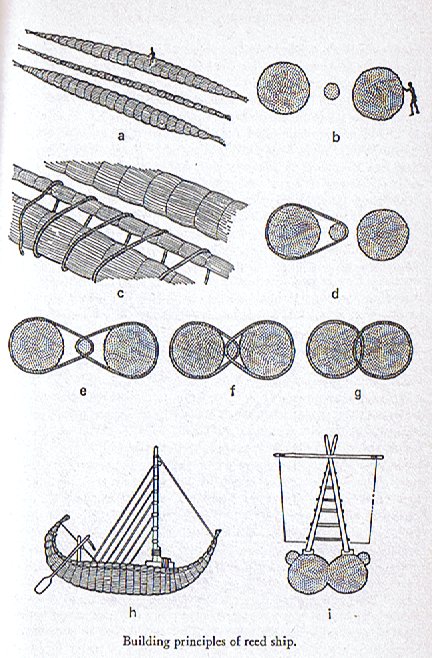
... All
this, which in so many ways
parallels the normal imagery
of the Old World
culture-hero myths, telling
of the one who is gone,
dwells underground in a
happy, timeless land, as
lord of the realm of the
happy dead, like Osiris,
but will rise again, we can
read
without
surprise. But what is
surprising indeed was the
manner of Quetzalcoatl's
actual return. The priests
and astrologers did not know
in what cycle he was to
reappear; however, the name
of the year within the cycle
had been predicted, of old,
by Quetzalcoatl
himself. Its sign was 'One
Reed' (Ce Acatl),
which, in the Mexican
calendar, is a year that
occurs only once in every
cycle of fifty-two. But the
year when Cortes arrived,
with his company of
fair-faced companions and
his standard, the cross, was
precisely the year 'One
Reed'. The myth of the dead
and resurrected god had
circumnavigated the globe
... |
|
MARCH 28 |
29 (88) |
30 |
31 (*10) |
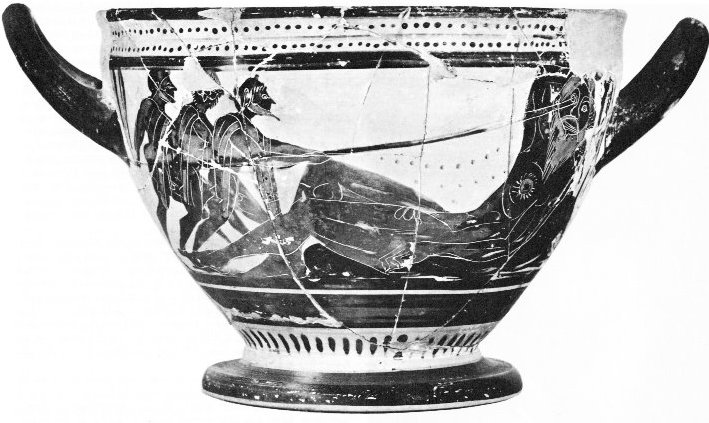
... 'Yes, for he was a
monstrous thing and
fashioned marvelously, nor
was he like to any man that
lives by bread, but like a
wooded peak of the towering
hills, which stands out
apart and alone from
others.' Odysseus, choosing
twelve men, the best of the
company, left his ships at
shore and sallied to the
vast cave. It was found
stocked abundantly with
cheeses, flocks of lambs and
kids penned apart, milk
pails, bowls of whey; and
when the company had entered
and was sitting to wait,
expecting hospitality, the
owner came in, shepherding
his flocks. He bore a
grievous weight of dry wood,
which he cast down with a
din inside the cave, so that
in fear all fled to hide.
Lifting a huge doorstone,
such as
two
and twenty good [maitaki]
four-wheeled wains
could not have raised from
the ground, he set this
against the mouth of the
cave, sat down, milked his
ewes and goats, and beneath
each placed her young, after
which he kindled a fire and
spied his guests ... |
 |
 |
 |
 |
|
Ga1-7 |
Ga1-8 |
Ga1-9 |
Ga1-10 |
|
TABIT
=
π³
Orionis
(71.7),
π²
Orionis (71.9)
320 (South Pole star,
Dramasa) - 71 (Tabit) = 249
(Antares) |
π4
Orionis (72.1),
ο¹
Orionis (72.4),
π5
Orionis (72.8)
*31.0 = *72.4 - *41.4 |
π¹
Orionis (73.0),
ο²
Orionis (73.4),
HASSALEH
=
ι
Aurigae
(73.6),
π6
Orionis (73.9)
*32.0 = *73.4 - *41.4 |
ALMAAZ (The Male Goat)
=
ε
Aurigae
(74.7),
HAEDUS I
=
ζ
Aurigae
(74.8) |
 |
|
May 31 |
June 1 (152) |
2 (*73) |
3 |
|
°May 27 |
28 (148) |
29 |
30 |
|
'May 4 |
5 (125) |
6 (*46) |
7 |
|
"April 20 |
21 (111) |
22 (*32) |
23 |
|
CLOSE TO THE FULL MOON: |
|
SEPT 27 (270 = 3 * 90) |
28 |
29 |
30 (*193) |
|
Tail-6 (Tiger)
WEI (Tail)
= ε Scorpii,
η Arae (254.3),
DENEBAKRAB
= μ Scorpii
(254.7) |
ι Ophiuchi (255.3),
GRAFIAS
(Claws)
= ζ Scorpii
(255.4)
*214.0 = *255.4 - *41.4 |
κ Ophiuchi (256.2), ζ Arae
(256.5), ε Arae (256.8),
CUJAM (Club)
= ε Herculi
(256.9) |
no star listed (257) |
|
Nov 30 |
Dec 1 |
2 (4 * 84 = 336) |
3 |
|
°Nov 26 |
27 |
28 |
29 (333) |
|
'Nov 3 |
4 |
5 |
6 (310) |
|
"Oct 20 |
21 (*214) |
22 (295) |
23 |
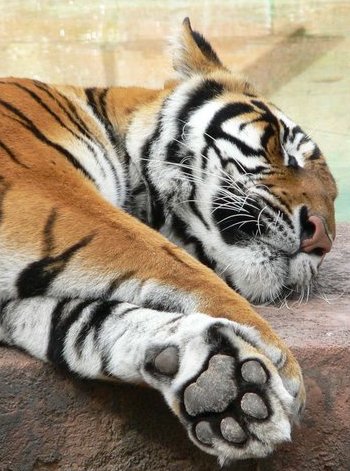 |
|
6 he ketu takarua. |
7 he teatea. |
8 he ngu haha tea. |
9 he mango. |
10
he hahara
rapanui
|
|
Ketu. To bound, to climb
over, to leap, to jump, to raise (keetu). Mq.
ketu, to raise, to lift. Ketuketu, to
spread out, hihi ketuketu, to turn
back the eyelids. Churchill. Pau.: Ketuketu,
to dig. Ta.: etuetu, id. Mq.: ketu, to
dig up with the snout. Ma.: ketu, id.
Churchill. Mq.: ketuketu, to snuff a candle.
Sa.: eueu, id. Churchill.
Taka,
takataka.
Circle; to form circles, to gather, to get together
(of people). Vanaga. 1. A dredge. P Mgv.:
akataka,
to fish all day or all night with the line, to throw
the fishing line here and there. This can only apply
to some sort of net used in fishing. We find in
Samoa ta'ā a
small fishing line, Tonga taka the short line
attached to fish hooks, Futuna taka-taka a
fishing party of women in the reef pools (net),
Maori takā the thread by which the fishhook
is fastened to the line, Hawaii kaa in the
same sense, Marquesas takako a badly spun
thread, Mangareva takara a thread for
fastening the bait on the hook. 2. Ruddy. 3. Wheel,
arch; takataka, ball, spherical, round,
circle, oval, to roll in a circle, wheel, circular
piece of wood, around; miro takataka, bush;
haga takataka, to disjoin; hakatakataka,
to round, to concentrate. P Pau.: fakatakataka,
to whirl around. Mq.: taka, to gird. Ta.:
taa, circular piece which connects the frame of
a house. Churchill.Takai, a curl, to tie;
takaikai, to lace up; takaitakai, to
coil. P Pau.: takai, a ball, to tie. Mgv.:
takai, a circle, ring, hoop, to go around a
thing. Mq.: takai, to voyage around. Ta.:
taai, to make into a ball, to attach. Churchill. |
|
APRIL 1 (59 + 32) |
2 |
3 (*13) |
4 |
5 (95) |
 |
 |
 |
 |
 |
|
Ga1-11 |
Ga1-12 |
Ga1-13 |
Ga1-14 |
Ga1-15 |
|
HAEDUS II
= η Aurigae
(75.9) |
5h (76.1)
ε
Leporis (76.0),
CURSA
(Footstool)
=
β
Eridani
(76.4),
λ
Eridani (76.7)
*35.0 = *76.4 - *41.4 |
μ
Aurigae, μ Leporis (77.6) |
ĸ Leporis (78.0),
RIGEL
(Foot)
=
β
Orionis
(78.1),
Flaming Star = IC405
(78.2),
CAPELLA
=
α
Aurigae
(78.4),
ο
Columbae,
τ
Orionis (78.8)
*37.0
= *78.4 - *41.4
THUBAN (α
Draconis)
|
λ Aurigae (79.0), λ Leporis (79.6), ρ Aurigae (79.7)
ARCTURUS (α
Bootis) |

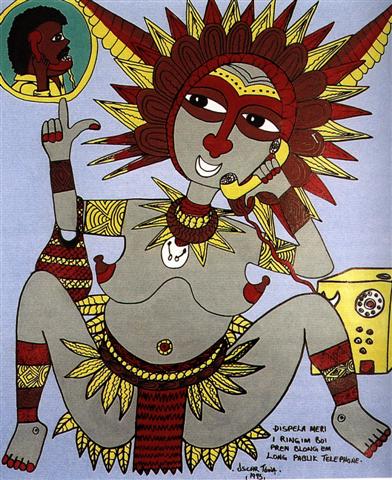
|
 |
 |
|
hanau |
RIGEL & CAPELLA
|
Hanau. 1. Race, ethnic group.
Hanau eepe, the thick-set race; hanau
momoko, the slender race (these terms were
mistranslated as 'long-ears' and 'short-ears'). 2.
To be born. Hanau tama, pregnant woman;
vî'e hanau poki, midwive (also: vî'e hakaa'u).
Vanaga. To be born; vie hanau, midwife. P
Pau.: fanauga, child, descendant, progeny.
Mgv.: hanau, to be born, to be brought into
the world. Mq.: fanau, hanau, to be
born, to lie in, to bring into the world. Ta.:
fanau, to be born, to lie in. Churchill. |
|
June 4 |
5 |
6 (157 = 314 / 2) |
7 (94 + 64) |
8 (*444) |
|
°May 31 (151) |
°June 1 |
2 (*73) |
3 (94
+ 60) |
4 (*440) |
|
'May 8 (128) |
9 |
10 (*50) |
11
(94 + 37) |
12 (*52) |
|
"April 24 (114) |
Vaitu Nui 25 (*35) |
26 (4 * 29) |
27 (94 + 23) |
28 (118 = 4 * 29) |
|
... The Explorers had left their
old homeland in "April 25 (115) - implying the
synodic cycle of Mercury - and they
had returned half a year later,
in "October 25 (298 = 115 + 183), which was 10 days
after the arrival of the Royal Double Canoe ...
... Ganz
ähnlich is der Name 'Gott von Duazag' des
Gottes Nabū ... zu erklären.
Er bezeichnet ihn als den Gott
des Wachtstums, welches als aus dem Osten stammend
betrachtet wird, weil die Sonne, die das Wachstum
bringt, im Osten aufgeht. Dass aber Nabū
als Ost-Gott aufgefasst wurde, hängt damit zusammen,
dass sein Stern, der Mercur, nur im Osten oder
Westen sichtbar ist ...

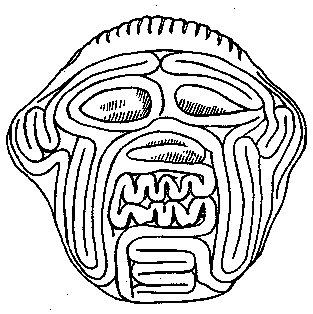 
 |
|
CLOSE TO THE FULL
MOON: |
|
OCT 1
(91 + 183) |
2
(275) |
3 |
4 |
5 |
|
17h
(258.7)
ARRAKIS = μ Draconis
(258.7) |
Mula-19 (The Root)
SABIK (The Preceding One)
=
η
Ophiuchi
(259.7),
η
Scorpii (259.9) |
NODUS I =
ζ
Draconis
(260.0),
π
Herculis (260.7),
RAS ALGETHI (Head of the Giant)
=
α
Herculis
(260.8) |
SARIN =
δ
Herculis
(261.0),
ο
Ophiuchi (261.4)
*220.0 = *261.4 - *41.4
ALRISHA (α
Piscium) |
ξ Ophiuchi (262.2), θ Ophiuchi, ν Serpentis, ζ, ι
Apodis (262.4), ι Arae (262.8), ρ Herculis (262.9)
*221.0 = *262.4 - *41.4 |
|
Dec 4 |
5 |
6 (*260) |
7 |
8 (342) |
|
°Nov
30 |
°Dec 1
(335) |
*(8 *
32) |
3 |
4
|
|
'Nov 7 |
8
(*232) |
9 |
10
(314) |
11 |
|
"Oct
24 |
Tangaroa Uri 25 |
26 |
27
(300) |
28 |
|
...
Page E:86 tells about Makoi being left behind
on Easter Island when the remaining 5 Explorers
sailed home to Hiva. From there (Tangaroa
Uri 25) to the day when Hotu became
worried about where Oto Uta was, i.e. in
Tangaroa Uri 30, there were 5 days:
|
April 25 (115) |
5 + 56 |
June 25 (176) |
5 + 116 |
Oct 25 (298) |
5 + 56 |
Dec 25 (359) |
5 + 116 |
|
61 |
2 * 61 |
61 |
2 * 61 |
|
183 |
183 |
|
366 = 2 * 183 = 6 * 61 |
And
from the autumn equinox (265) at Antares to the
Sting of the Scorpion (υ
Scorpii) there were 15 days
...

... the tubers [of kape]
had to be kept in the earth-oven for 15 (sic)
days in order to eliminate some of the poisonous
components ... 2 *
175 (Day of St John) = 350 = 365 - 15.
... Thus the regular
old Roman year ended with Februarius 23 and it was
350 nights long, 25 fortnights ... |
Aldebaran was at the beginning of a dark season - because
for the Polynesians Antares announced the return of the
southern half of the year, and thus Ana-muri had to
be the Rear
Pillar - at the foot of which was the place for tattooing.
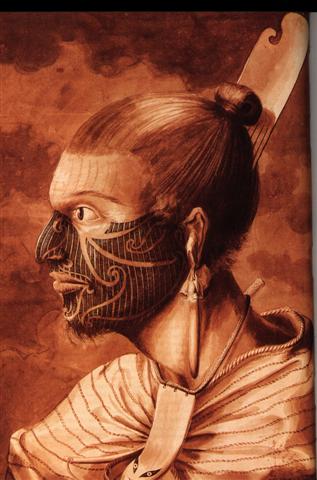
Mgv.: rei, whale's
tooth. Mq.: éi, id.
This is probably associable with the general Polynesian
rei, which means the
tooth of the cachalot, an object held in such esteem that in
Viti one tooth (tambua)
was the ransom of a man's life, the ransom of a soul on the
spirit path that led through the perils of Na Kauvandra
to the last abode in Mbulotu. The word is undoubtedly
descriptive, generic as to some character which Polynesian
perception sees shared by whale ivory and nacre.
... The veil of Latona, the mother of
Apollo and Diana (Sun and Moon), was black. The Hindus of
north-west India still worship 'Suria', the sun, under
the emblem of a black stone. The colour of the Egyptian bulls
Apis and Mnevis was black, and in the hieroglyphic
representations of acts of consecration or anointing, the
officiating priests is painted black, and the recipient of the
ceremony is painted red; this more especially in upper Egypt.
Hence the black colour would seem to indicate superior
sacredness. It is possible that from these and similar
considerations of superiority or sacredness arose the Polynesian
proverb (in Hawaiian), 'he weo ke kanaka, he pano he alii',
red is the common man, dark is the chief. In 'Polynesian
Researches' the Rev. Mr. Ellis explains a similar expression in
Tahiti, from the fact that a dark and bronsed complexion was
looked upon, among the chiefs, as a sign of manliness,
hardihood, and exposure to fatigue and danger, and a pale
complexion was considered a sign of effeminacy. The probable
reason and explanation of the proverb may be found in the
grander amount of tattooing with which the bodies of the chiefs
were adorned. As late as the time of Kamehameha I of
Hawaii, his rival, Kahekili, King of Maui, had one half
of his body entirely blackened by tattooing. The connection of
the black colour with Siwa's symbols may be found in the
Hindu legend, according to which, at the churning of the sea of
milk for the production of Amutham (the Ambrosia of
immortality) Siwa, the supreme, was appealed to by the
other gods to remove the poison vomited in the Ambrosia by the
serpent Vasuke. He complied with their request by
drinking up the poison, but from that time he was known by the
name of 'the azure-necked one' , because the colour of the
poison remained on his neck as a sign of what he had done
...
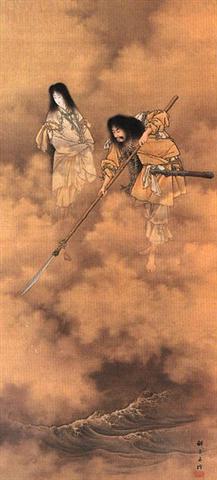
|





































